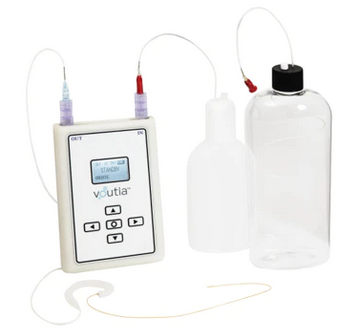Source: www.dentistryiq.com
Author: John Kringel
Helping patients with xerostomia can be especially challenging. Set aside for a moment the dental complications that result, such as rampant caries and mucositis. Severe symptoms like difficulty swallowing, sleeping, and talking can ruin the sufferer’s daily quality of life at the most basic level. Yet the available interventions1 come down to lifestyle tips such as sucking on ice chips, chewing sugar-free gum, and using a humidifier at night.
Dr. Jeffrey Cash, a dentist in Richmond, Virginia, has experienced the frustration of dealing with xerostomia from multiple perspectives. He was initially moved by his hospital-based residency working with head-and-neck cancer patients.
“My conversations with patients who had tried the standard suggestions without finding relief generally went like this: ‘Can’t you do anything else for me? I’m miserable. I can’t eat properly. I wake up four times a night because I can’t breathe.’ My answer, which felt terrible, amounted to ‘welcome to the new normal.’ ”
Within a year of graduation, Dr. Cash learned exactly what these patients had experienced when he underwent chemotherapy as a part of his own cancer treatment.
“Shortly after starting chemo, I developed severe dryness which led to mucositis. It was so uncomfortable I didn’t want to swallow or eat anything that would scratch the tissue.”
The combined experience as a dentist and a xerostomia sufferer started Dr. Cash on a decades-long mission to invent a new treatment option that would be immediate, continuous, and predictable.
That aspiration became a reality in 2021 with the launch of Voutia.2 Voutia3 is a wearable device incorporating a quiet, lightweight micro-pump, a water bottle, and ultrafine tubing. It closely mimics natural saliva flow by providing continuous moisture replenishment directly to the mouth. About the size of a cell phone and engineered for 24/7 use, Voutia is nearly imperceptible in normal social interaction.
Patients seeking relief will continue to show up at dental practices. While the causes are medical and systemic, xerostomia is naturally seen as a dental issue since the symptoms manifest orally. It’s a common condition with an estimated prevalence of 6% at age 50, increasing to between 15% and 30% by age 65 and over.4
According to the American Dental Association, the prevalence of xerostomia rises to nearly 100% for those receiving radiation therapy for head and neck cancer and for patients with Sjögren’s syndrome.1 Compound those statistics with an aging population and the increasing number of prescriptions for medications having dry mouth as a side effect, and it becomes clear that dentists will remain on the front line in terms of supporting xerostomia sufferers.
“I used what happened to me as the motivating force to create a new tool for our treatment armamentarium,” said Dr. Cash. “Unless you’ve experienced it [xerostomia] firsthand, it’s hard to understand just how profoundly this condition affects the daily life of that person sitting in your waiting room.”
Editor’s note: This article first appeared in Through the Loupes newsletter, a publication of the Endeavor Business Media Dental Group. Read more articles at this link and subscribe here.
References
1. Oral health topics. Xerostomia (dry mouth). American Dental Association. Department of Scientific Information, Evidence Synthesis & Translation Research, ADA Science & Research Institute, LLC. Updated February 22, 2021. https://www.ada.org/en/member-center/oral-health-topics/xerostomia
2. Voutia device provides a new answer for chronic dry mouth sufferers. News release. The Reflective Agency. February 12, 2021. https://www.einnews.com/pr_news/535445173/voutia-device-provides-a-new-answer-for-chronic-dry-mouth-sufferers
3. Voutia home page. https://voutia.com/
4. Navazesh M, Kumar SKS. Xerostomia: prevalence, diagnosis, and management. Inside Dental Assisting. 2009;5(10):10-15.


Leave A Comment
You must be logged in to post a comment.